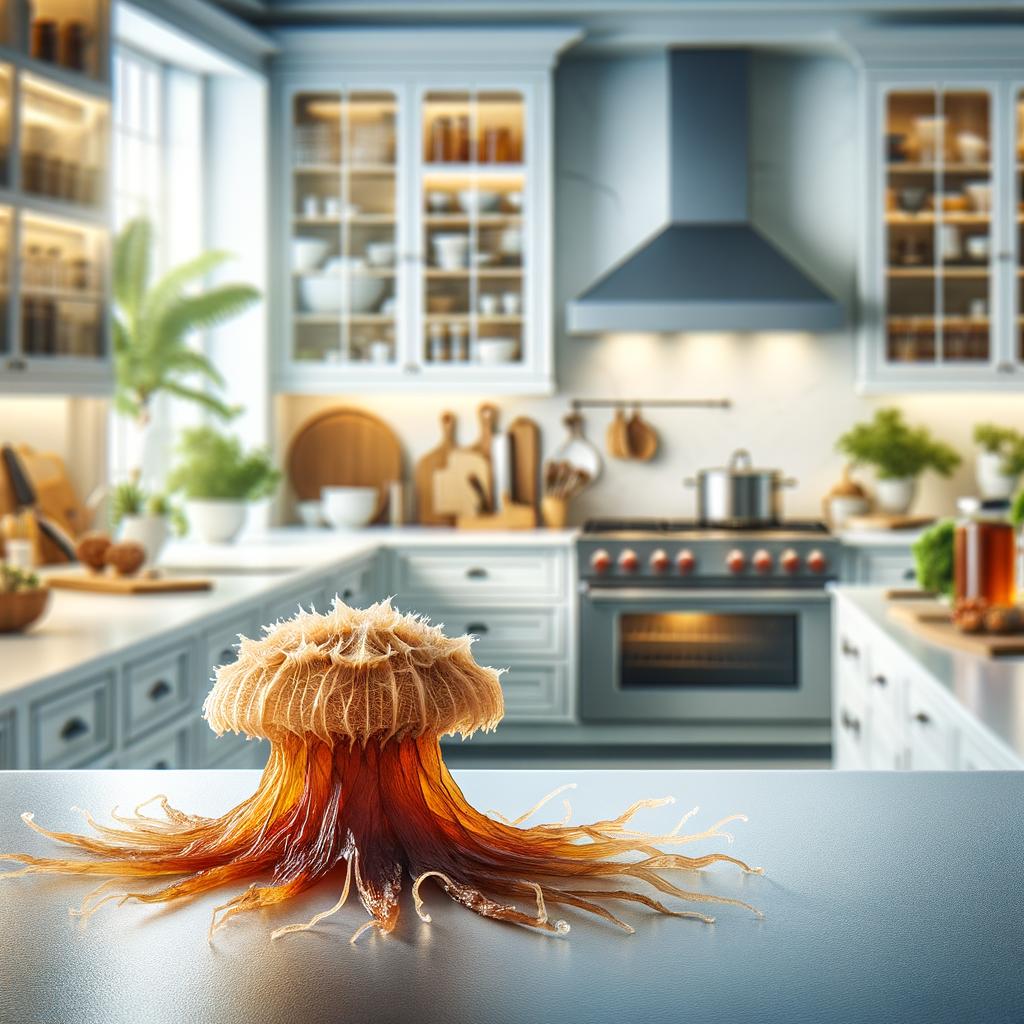Dried Jellyfish

Description
Dried jellyfish, a delicacy in many Asian cuisines, is a truly unique ingredient. When dried, these marine creatures take on a translucent, almost ethereal appearance, their bodies shriveled and compacted into a dense, chewy texture. The flavor profile of dried jellyfish is subtle and largely neutral, acting as a canvas for the flavors of accompanying ingredients. The texture, however, is where dried jellyfish truly stands apart. It boasts a unique crunchiness, quite unlike anything else, that adds a delightful contrast to dishes.
Primary Uses
Dried jellyfish is a cornerstone ingredient in a variety of Asian dishes, particularly in Chinese, Korean, and Japanese cuisines. It is often rehydrated and served in salads, where it is marinated with sesame oil, soy sauce, vinegar, and other flavorings. The jellyfish's unique texture adds a distinctive crunch to these dishes. In addition to its culinary uses, dried jellyfish has been used in traditional Chinese medicine for centuries, believed to have benefits for the heart and to help lower blood pressure.
History
The history of dried jellyfish is as fascinating as the ingredient itself. Its use in Asian cuisines dates back thousands of years, with evidence of its consumption during the Tang Dynasty in China. Over time, its popularity spread to other parts of Asia, including Japan and Korea. There are tales of ancient seafarers who, upon being stranded at sea, discovered the utility of sun-drying jellyfish to preserve them for sustenance. Today, this humble sea creature has found its way into gourmet kitchens around the world, a testament to its enduring appeal.
Nutritional Information
Dried jellyfish is a low-calorie food that is high in protein, making it a good choice for those looking to maintain a healthy diet. It is also rich in essential minerals like magnesium and potassium. Additionally, it contains a unique protein, fibrillin, which is believed to contribute to skin elasticity and may have anti-aging properties. However, it's important to note that dried jellyfish is often prepared with a high amount of sodium, so those with hypertension should consume it in moderation. Compared to other types of dried seafood, jellyfish is lower in fat and calories, making it a healthier alternative.

